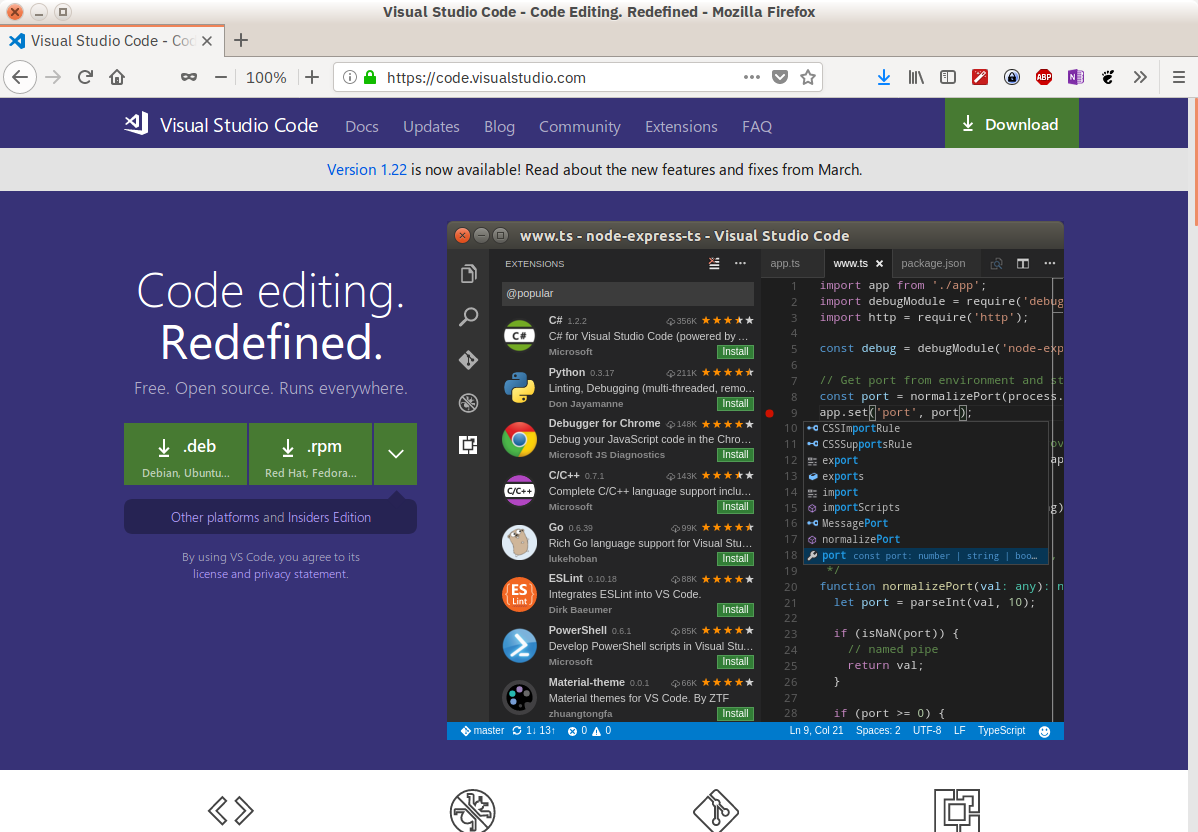

- #How to use hard key to run python in visual studio code how to#
- #How to use hard key to run python in visual studio code update#
- #How to use hard key to run python in visual studio code code#
Including looking through the code on github, but don't see anyway at all to do it.

#How to use hard key to run python in visual studio code how to#
It's incredibly annoying and I've spent a lot of time trying to figure out how to disable it. And it nicely dodges all the padding and unnecessary white-space problems that a Jupyter notebook has compared to a mathematica one, allowing more information to fit on the screen.įor one downside: I haven't ever used an extension that is so inclined to randomly pop up with tips and surveys while I am programming as this one. Also, it allows having the output side-by-side which takes better advantage of the horizontal to vertical pixel ratio of monitors.Īnother thing I like is that editing cells as plain text using #%% to separate them is just a better more intuitive interface for a programmer than having a bunch of separate text-areas (imho). However having all the output be in a dedicated window as this extension does, that allows for scrolling back in the order things were run rather than in the order they are laid out in the notebook is turning out to be better for some use cases. I am a big fan of jupyter notebooks, and wrote my own version for Scala (it was more inspired by Mathematica since Juypter didn't exist yet) a long long time ago. The following declarative definitions specify the same tables defined in sqlite_ex.Overall I really like this extension and especially its interactive programming / notebook features.

Instead of having to write code for Table, mapper and the class object at different places, SQLAlchemy's declarative allows a Table, a mapper and a class object to be defined at once in one class definition.
#How to use hard key to run python in visual studio code update#
In the previous example, we used an sqlite3 connection to commit the changes to the database and a sqlite3 cursor to execute raw SQL statements to CRUD (create, read, update and delete) data in the database. Now we write the corresponding database initialization code in a file sqlite_ex.py. In this design, we have two tables person and address and address.person_id is a foreign key to the person table. Note: If you want to checkout how to use SQLite for Python, you might want to have a look at the SQLite in Python series. We're going to use the library sqlite3 to create a simple database with two tables Person and Address in the following design: The Old Way of Writing Database Code in Python Instead of writing tedious database interfacing code yourself, an ORM takes care of these issues for you while you can focus on programming the logics of the system. Our previous example can be expressed as an ORM system with a Person class, a Address class and a PhoneNumber class, where each class maps to a table in the underlying database. In order to deal with the complexity of managing objects, people developed a new class of systems called ORM. In addition, these complex objects may also include instance or class methods that cannot be expressed using a type at all. Although simple objects such as PostCodes and StreetNames can be expressed as strings, a complex object such as a Address and a Person cannot be expressed using only strings or integers. In turn, an Address object may have a PostCode object, a StreetName object and a StreetNumber object associated with it.

For example, a Person object may have a list of Address objects and a list of PhoneNumber objects associated with it. Usually, the type system used in an OO language such as Python contains types that are non-scalar, namely that those types cannot be expressed as primitive types such as integers and strings. ORM is a programming technique for converting data between incompatible type systems in object-oriented programming languages. Nowadays, programmers can write Object-relational mapping ( ORM) programs to remove the necessity of writing tedious and error-prone raw SQL statements that are inflexible and hard-to-maintain. In the past, programmers would write raw SQL statements, pass them to the database engine and parse the returned results as a normal array of records. Last Updated: Thursday 12 th December 2013 Python's SQLAlchemy and Object-Relational MappingĪ common task when programming any web service is the construction of a solid database backend.


 0 kommentar(er)
0 kommentar(er)
